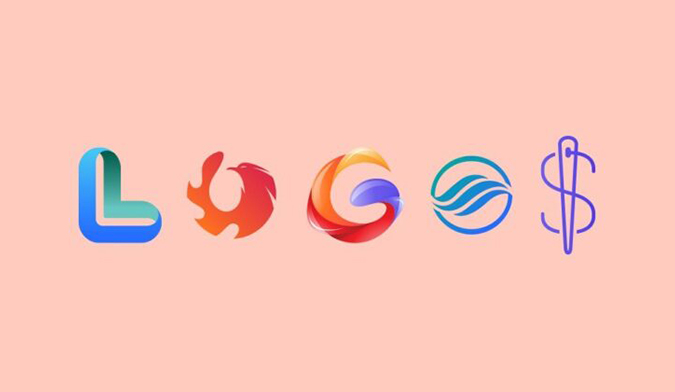
In a world where logos reign supreme, we often forget to give credit to the unsung heroes of brand identity - the humble logo designers. From simplistic symbols to intricate illustrations, the evolution of logo design has been a wild ride through time. So buckle up, grab a cup of coffee (or two), and join us as we unveil the fascinating journey of logo design, one pixel at a time.
The Birth of Logos in Ancient Times
Let’s take a trip down memory lane to ancient times when the birth of logos was about as baffling as deciphering hieroglyphics. Picture this: a group of toga-wearing philosophers sitting around a marble table, arguing over what shape a logo should be. Should it be round like a grape or angular like a pyramid?
After much deliberation, they came up with the brilliant idea of using symbols to represent different concepts and brands. **Eureka!** With that, logos were born – paving the way for iconic designs like the Nike swoosh and the golden arches of McDonald’s.
Fast forward to ancient Rome, where logos were slapped on everything from shields to pottery. It was like a game of ancient product placement, with each logo vying for attention and recognition.
As time went on, the concept of logos evolved and transformed into the powerhouse marketing tool we know today. But let’s not forget where it all began – in the quirky, creative minds of ancient thinkers who pondered the mysteries of the universe while sipping on goblets of wine.

Influence of Art Movements on Logo Design
Art movements have played a significant role in shaping the world of logo design. From the bold colors of Pop Art to the clean lines of Minimalism, different styles have influenced the way companies present themselves to the world. Let’s take a look at how some famous art movements have left their mark on logo design:
1. Cubism:
- Logo designers took inspiration from the fragmented shapes and geometric forms of Cubism to create visually dynamic logos.
- Companies began experimenting with overlapping elements and abstract shapes to convey a sense of depth and movement in their logos.
2. Surrealism:
- Logo designers embraced the dreamlike and irrational qualities of Surrealism to create logos that spark imagination and curiosity.
- Logos started incorporating unexpected elements and visual juxtapositions to create a sense of intrigue and mystery.
3. Pop Art:
- Logo designers drew on the playful and vibrant colors of Pop Art to create logos that stand out and grab attention.
- Logos began to feature bold typography and graphic elements inspired by popular culture to appeal to a younger, trendier demographic.

Industrial Revolution and the Rise of Brand Logos
The Industrial Revolution brought about massive changes in society, including the rise of brand logos. Before this era, companies didn’t really have a way to distinguish themselves visually, leading to a lot of confusion among consumers. Can you imagine walking into a store and not being able to tell the difference between a Coca-Cola and a Pepsi? Chaos!
But with the dawn of the Industrial Revolution, companies started realizing the importance of having a unique logo to help them stand out from the competition. These logos became the face of the brand, instantly recognizable and etched into the minds of consumers. Suddenly, you couldn’t go anywhere without seeing the Coca-Cola script or the Nike swoosh. It was a logo extravaganza!
As technology advanced, so did the sophistication of these logos. Companies started hiring designers to create sleek, eye-catching logos that could be printed on everything from packaging to billboards. Logos became a symbol of status and class, with consumers proudly displaying their favorite brands on their clothing and accessories.
Today, brand logos are everywhere you look, constantly bombarding you with their messages and promises. Whether you’re a fan of the golden arches or the bitten apple, one thing is for sure – the Industrial Revolution paved the way for the rise of brand logos and changed the way we as consumers interact with the world around us.

The Impact of Technology on Modern Logo Creation
When it comes to modern logo creation, technology has revolutionized the way designers approach their craft. Gone are the days of tedious hand-drawn sketches and painstaking revisions. Now, designers can whip up a logo in a matter of minutes using advanced software and digital tools.
With the rise of technology, logos have become more dynamic and versatile than ever before. Designers can now easily experiment with different colors, fonts, and layouts to create a logo that truly stands out. The possibilities are endless, and the only limit is the designer’s imagination.
One of the biggest impacts of technology on logo creation is the ability to easily adapt logos for different mediums. Whether it’s for a website, social media profile, or business card, designers can quickly resize and adjust logos to fit any platform. This flexibility allows brands to maintain a consistent image across all their marketing materials.
Overall, has been nothing short of revolutionary. Designers now have more tools at their disposal than ever before, allowing them to create logos that are not only eye-catching but also highly effective in conveying a brand’s identity. So, the next time you see a sleek and polished logo, remember to thank technology for making it all possible!

Evolving Trends in Logo Design for the Digital Age
Logos are like the Millennials of the design world – constantly evolving and trying to find their identity in the digital age. From the days of simple, static logos, we’ve now entered the era of dynamic, interactive logos that change with the swipe of a finger. Here are some of the latest trends in logo design that are keeping designers on their toes:
- Adaptive Logos: Gone are the days when your logo had to look the same on every screen. Now, logos are like chameleons, adapting to different sizes and orientations to fit seamlessly on any device.
- Animated Logos: Why settle for a boring static image when you can have a logo that dances, bounces, and captivates the attention of your audience? Animated logos are the new GIFs of the design world, bringing brands to life in a whole new way.
- Minimalist Logos: In a world cluttered with information, minimalist logos are like a breath of fresh air. Simple, clean, and to the point, these logos embody the less is more philosophy and make a big impact with just a few well-chosen elements.
So, whether you’re a traditionalist who loves the classic look of a timeless logo or a trendsetter who wants to push the boundaries of design, there’s something for everyone in the ever-evolving world of logo design. Embrace the chaos, embrace the change, and most importantly, embrace your logo - it’s the face of your brand, after all.
FAQs
What were some of the earliest forms of logos?
Back in the caveman days, logos were pretty rudimentary. Think stick figures drawing on cave walls – not quite the Nike swoosh we’re used to today.
How have logos evolved over the centuries?
Well, let’s just say we’ve come a long way from clay tablets and hieroglyphics. Logos have gone from simple symbols to intricate designs that can convey a brand’s entire essence in a single image.
What role did the Industrial Revolution play in logo design?
The Industrial Revolution was like a logo design renaissance. With the rise of mass production, companies needed a way to differentiate themselves from competitors, leading to the birth of more complex and innovative logos.
How has technology impacted logo design in recent years?
Thanks to technology, logo design has gone digital. Designers now have a plethora of tools at their disposal, allowing them to create logos that are not only visually appealing but also dynamic and versatile.
What does the future hold for logo design?
Who knows? Maybe logos will become holographic projections beamed directly into our brains. Or maybe we’ll go back to caveman-style stick figures. One thing’s for sure – logo design will continue to evolve and surprise us in ways we can’t even imagine.
Stay tuned for more logo evolution!
And there you have it, folks! The fascinating journey of logo design through the ages. Who knew that a simple emblem could have such a rich history? We hope you enjoyed this trip down memory lane and learned a thing or two about the evolution of logos. Keep an eye out for our next installment as we dive deeper into the ever-changing world of branding. Just remember, logos may change, but our love for creative design will always remain constant. Until next time, keep on logo-ing!









